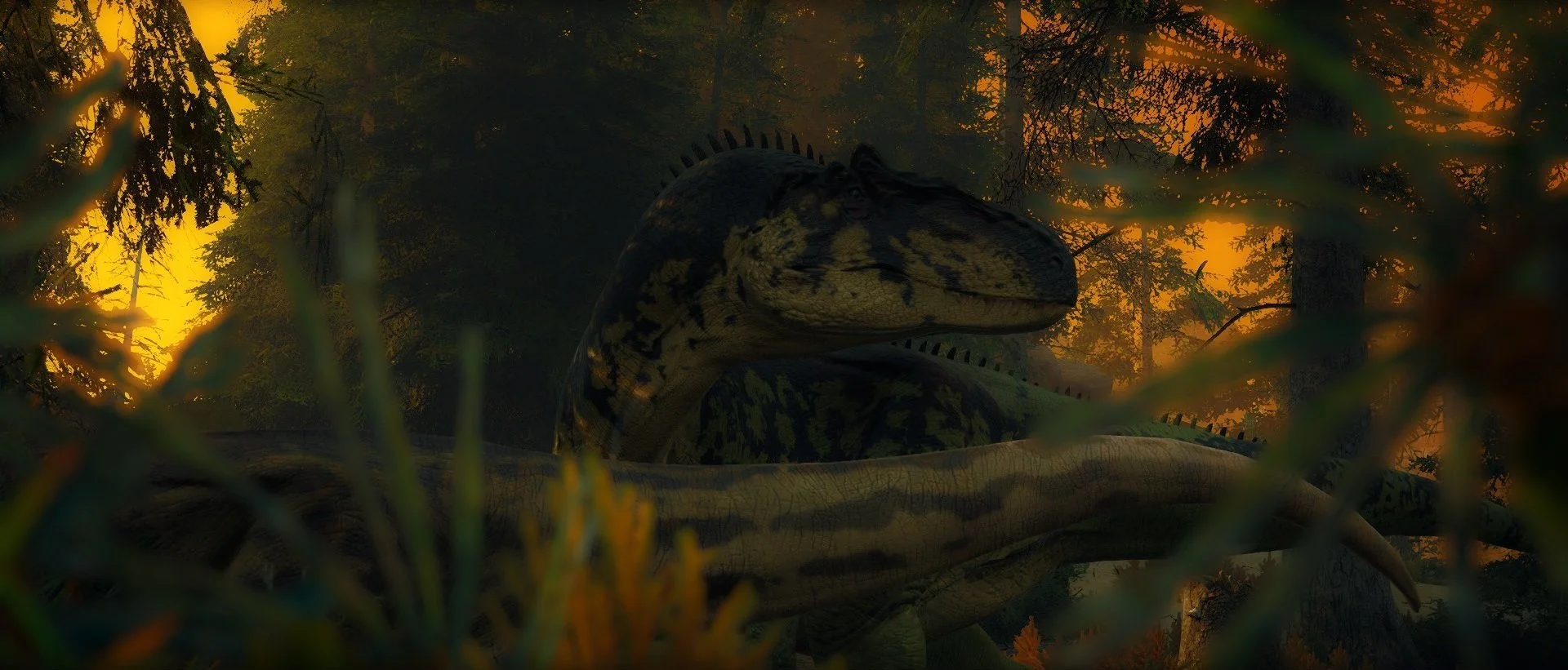Yutyrannus
Tier: 4
Type: Terrestrial carnivore
Passive growth time: 2 hrs 51 min
Pack size: 5 sub adults/adults, 1-6 juveniles/adolescents
Hierarchy: Gerontocracy
Mating bond: Monogamous
Nest size: 1-3 offspring per pair
Diet tags: Carnivore, non-cannibalistic, opportunistic & non-scavenger
Preferred food: Tier 1-5 carnivores & herbivores.
Species specific rules: If they have at least 3 sub adults/adults, they can also hunt Tier 6 herbivores & carnivores.Behavior
If there ever was a better embodiment of the strong social bonds of the tyrannosaur family, it would find itself in one of its most ruthlessly efficient forms in none other than the illustrious Yutyrannus. Aggression is the keystone of a Yutyrannus’ life and unlike its closely related cousins, relish in petty squabbles amongst each other. A display of affection between these creatures could easily be mistaken for a fight to the death, but these contests play a vital role in honing their ferocity and play an even bigger role yet in deepening their bonds with each other. A pack of these volatile killers usually consists of the dominant breeding pair and its children. Leadership in a pack is typically delegated to the parents but may pass from time to time between members depending on their seniority and experience.
Recommended behaviors
╸Yutyrannus is very aggressive and unpredictable and will often spar with each other as an outlet for that aggression.
╸They will avoid hunting or attacking other species of Tyrannosaurs unless absolutely necessary for their survival.
╸They are nomadic and will often follow where their prey migrates.
╸Yutyrannus despise water and will abandon the pursuit of prey if they must cross a body of water.
Mating
Yutyrannus males display their vibrant and iridescent plumes during mating season. It takes a great deal of care to impress their prospective partners with an elaborate dance where every step is taken with caution and forethought. They circle the females, chuffing and holding their heads high to flare their crests flush with color. This process of peacocking ends with a grand finale where the male hangs his head low and performs a series of movements from left to right. This attempt at courtship might repeat over the span of several days before a female might finally show interest, in which time the male must be especially careful to not be spotted by the pack's dominant male, often the father of the female, who will attack with very little prior warning.
Nesting & offspring
When it comes time to nest, Yutyrannus will seek out remote caves or shelter far from potential danger where a nest will be quickly made from dirt. The care and nurturing of the offspring is a responsibility shared by every adult member of the pack. From the earliest stages of infancy, a Yutyrannus learns the importance of depending on its siblings and parents for all its essential needs, and kinships are formed almost as quickly as they can spar and lock their jaws together. Upon reaching adolescence, the offspring will begin accompanying the adults on hunts, albeit from a safe distance and they will quickly adapt to the pack’s nomadic lifestyle. Upon reaching adulthood, males might leave the family they grew up with in search of a female from another pack they will attempt to court and start their own pack with.




